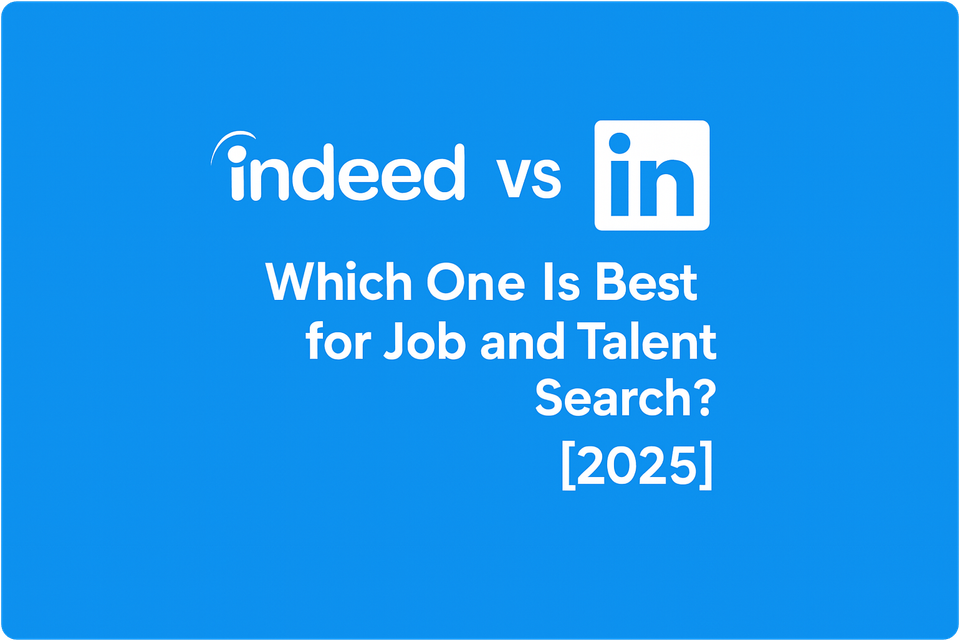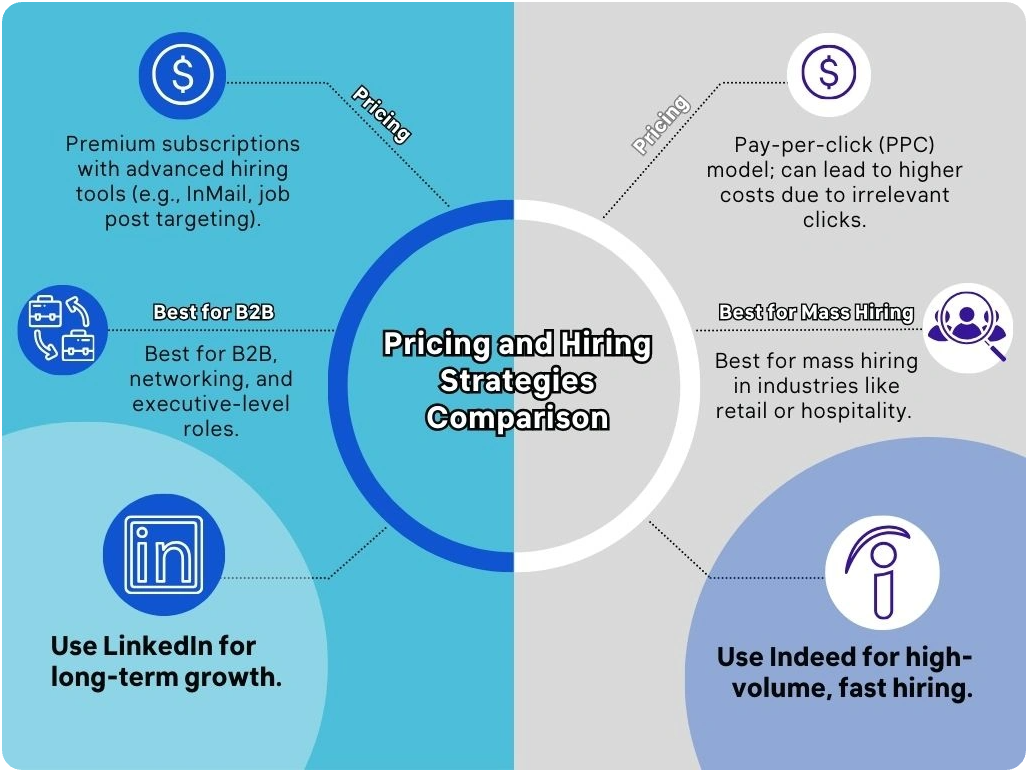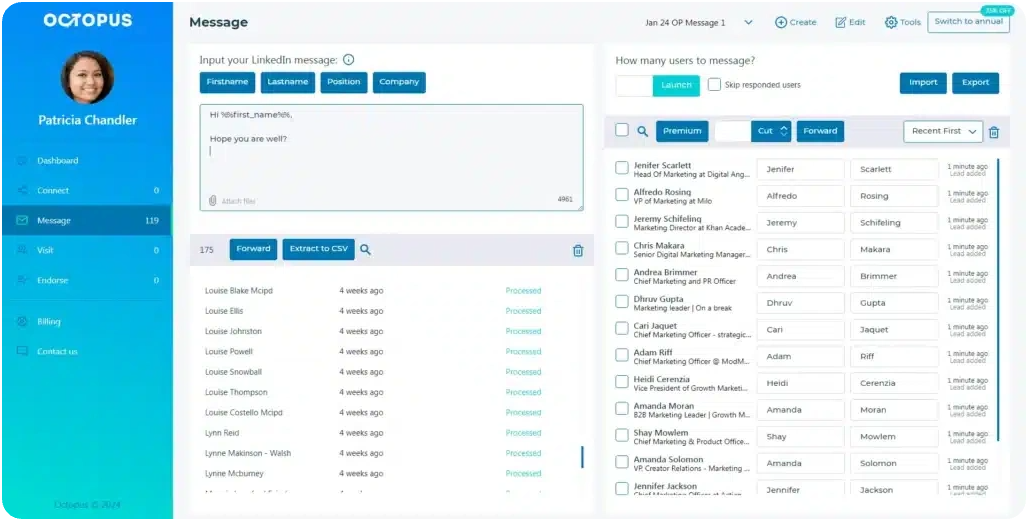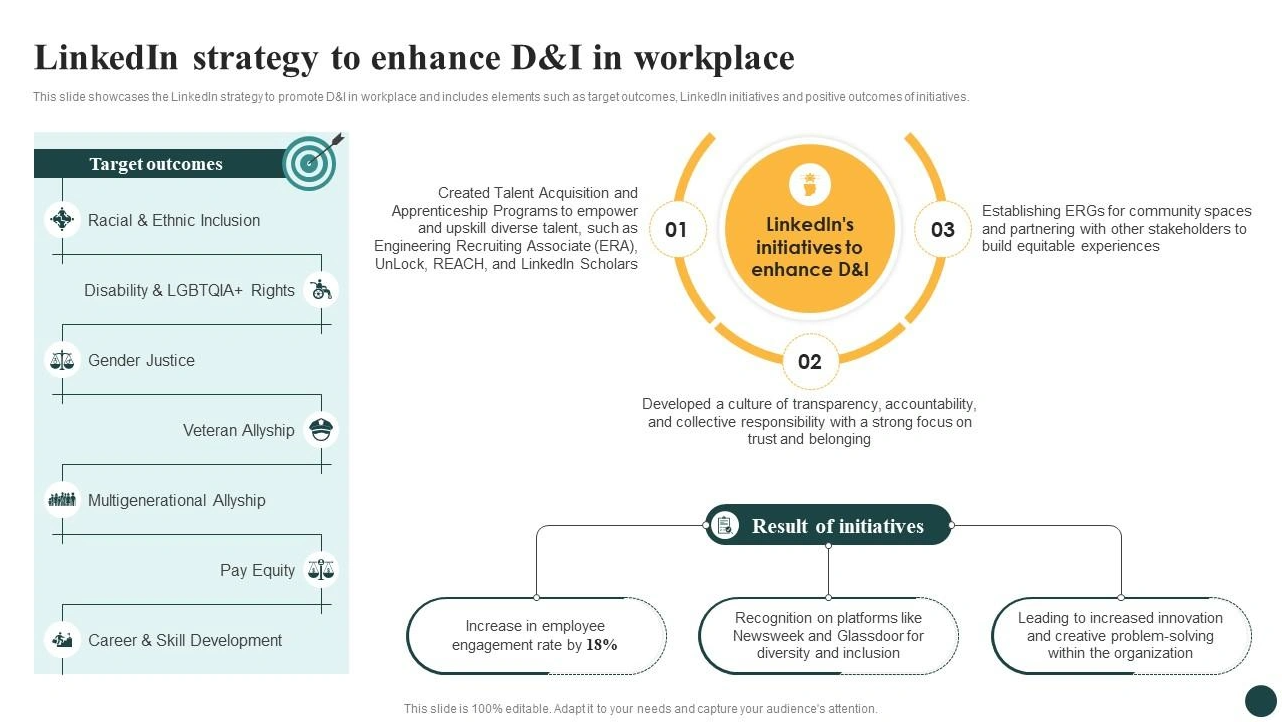Indeed vs LinkedIn: Which One Is Best for Job and Talent Search? (2025)

Indeed and LinkedIn stand as two job search powerhouses with distinctly different approaches. Indeed attracts over 350 million unique visitors monthly. LinkedIn boasts 1.2 billion members globally, and approximately 25% of them access the platform daily. Choosing between LinkedIn and Indeed for your next career move or hiring strategy isn't always simple. Indeed leads in application volume and generates 66% of all applications with an impressive 99% offer acceptance rate. The LinkedIn platform creates a more selective candidate pool. It produces 13% of total applications, but achieves twice the interview rate compared to Indeed. Indeed has maintained its position as the most visited job website in the U.S. since 2010. The platform focuses on simplicity and volume, while LinkedIn utilizes its social networking foundation to enable relationship-based recruiting.
This piece breaks down their strengths, weaknesses, and optimal use cases to help you make the right choice in 2025.
Indeed vs LinkedIn: Quick Overview
| Feature | Indeed | |
|---|---|---|
| Monthly Users | 1.2B members globally (25% active) | 350M+ unique visitors |
| Platform Type | Professional social network | Job board aggregator |
| Application Share | 13% of all applications | 66% of all applications |
| Interview Success | 2x higher interview rate than Indeed | Standard interview rate |
| Offer Acceptance Rate | 77% | 99% |
| Job Types | Professional, executive, and leadership roles | Entry-level, hourly work, gig jobs |
| Pricing Model | Pay-per-click Recruiter Lite: $139.99/month |
Pay-per-application ($15–$50) Sponsorships from $5/day |
| Candidate Type | Active and passive candidates | Mostly active job seekers |
| Resume/Profile | Professional networking profiles | Public resume database |
| Search Functionality | Advanced filters + Boolean search | Basic keyword search |
| Core Strength | Relationship-based sourcing | Application volume at scale |
The numbers tell an interesting story about how these job platforms work and who they serve. Let's look at what makes these employment giants different from each other.
User Base and Reach: 1B+ on LinkedIn vs 350M+ on Indeed
LinkedIn has grown into a global powerhouse with 1.1 billion members across more than 200 countries and territories. Most of its users (60%) are between 25-34 years old. Indeed sees about 350 million unique visitors each month, and its audience tends to be younger - with 31.35% of users aged 25-34. The platform has become the first choice for American job seekers, as 93% of people looking for jobs online use Indeed.
Platform Type: Social Network vs Job Aggregator
These platforms serve different purposes at their core. LinkedIn works as a professional networking site that puts career growth and relationship-building first. While it has many job listings, they come second to its networking features. Indeed takes a different approach - it's purely a job board that combines listings from thousands of websites, company pages, staffing agencies, and other job sites. The platform focuses solely on connecting people with jobs rather than building professional networks.
Application Volume vs Interview Quality: 66% vs 13% application share
The numbers show an interesting trade-off between quantity and quality. Indeed leads in total applications, generating 66% of all applications with a 99% offer acceptance rate. LinkedIn makes up 13% of total applications, but its candidates are twice as likely to get interviews compared to Indeed's applicants. The data shows that 4% of LinkedIn applicants get interviews, 21% receive job offers, and 77% accept those offers.
Pricing Models: Pay-per-click vs Pay-per-applicant
Both platforms let you post jobs for free and offer paid promotion options. LinkedIn uses a pay-per-click model where employers choose their budget, which might cost more but reaches more specific audiences. Indeed's free job posts come with sponsored options starting at $5 daily. The platform also has a unique pricing system based on applications, usually charging $15-$50 depending on the job type, location, and past hiring data.
Is Indeed Better Than LinkedIn for Job Seekers?

The platform you pick can affect your job search a lot. Your career goals and priorities will determine which one works best for you.
Ease of Use: Simple Search vs Profile-Driven Discovery
Indeed stands out with its easy-to-use search interface. The platform works as a metasearch engine that brings job postings from thousands of websites to one place. You can quickly find opportunities through specific keywords, job titles, or experience levels. LinkedIn works differently as a professional networking platform where you find jobs through connections and social interactions. Your profile works as your digital resume, making the experience more about relationships than searching.
Job Types: Entry-Level and Gig Jobs vs Executive and Niche Roles
Indeed works great for entry-level positions, hourly work, and gig opportunities. A user shared: "Within three days [of making an Indeed account], I had four or five people calling me". LinkedIn proves more effective for professional, managerial, or executive roles where networking is vital. The platform's focus on professional backgrounds and skills makes it a great fit for specialized positions.
Resume Visibility: Public Resume Bank vs Profile Networking
Indeed lets you create a public resume that employers can search directly. Recruiters can find you even when you haven't applied to specific positions. LinkedIn's profile-based system highlights your professional network and connections. This approach often leads to referrals and introductions from shared contacts.
AI Tools: Resume Analyzer and Job Match Features
Both platforms use AI to boost job searching. Indeed's SmartSourcing looks at your resume to match you with relevant opportunities. This saves employers an average of 8.1 hours per week. The platform also suggests personalized job recommendations and analyzes skill gaps. LinkedIn's AI Career Navigator looks at your profile, skills, and connections to suggest positions that match your career goals.
Scam Prevention and Job Quality Control
Scammers target both platforms actively. Watch out for immediate job offers without interviews or requests for equipment payment. Indeed removes "tens of millions of job listings each month that do not meet our quality guidelines". Users should report suspicious listings on both platforms.
Is LinkedIn Better Than Indeed for Recruiters?

Recruiters often struggle to pick the right platform to find top talent. Each platform has unique advantages that depend on your hiring goals and target candidates.
Candidate Quality: Passive Talent vs Active Seekers
LinkedIn helps recruiters connect with professionals who aren't actively looking for jobs but might be open to great opportunities. The platform's access to passive talent makes it valuable, especially when you have specialized or senior-level positions to fill. LinkedIn applicants are twice as ready for interviews compared to other platforms, though the cost runs 3-4x higher. Indeed works better when you need to reach a broader audience of active job seekers.
Outreach Tools: InMail, Groups, and Direct Messaging
LinkedIn's communication features give recruiters a competitive edge. The InMail feature lets you message potential candidates directly, even without connections. Professional groups are a great way to get in touch with industry specialists through meaningful discussions. These personal outreach options lead to better response rates than traditional job boards.
Advanced Filters and Boolean Search Capabilities
LinkedIn's sophisticated search tools help recruiters filter candidates by specific skills, experience levels, or industry backgrounds. Boolean search terms make it easy to find exact candidate matches based on detailed criteria. These advanced filtering options work best when you're looking for candidates with niche expertise or qualifications.
Employer Branding: Career Pages and Life Tabs
LinkedIn offers reliable employer branding features that let companies showcase their culture and values. The platform's "Life" tab and "Commitments" sections highlight workplace culture and company values. Indeed also has company pages with reviews and salary information, but LinkedIn's networking foundation creates better opportunities for authentic brand storytelling.
LinkedIn Recruiter vs Indeed Resume Access
LinkedIn Recruiter comes with detailed talent sourcing tools, expanded network access, and advanced analytics. The service has tiered options—Recruiter Lite starts at $139.99 monthly for simple functionality, plus premium versions that offer unlimited networking. Indeed Resume takes a different approach with straightforward access to millions of resumes and an easy-to-use interface that focuses on volume rather than relationship-building.
When to Use Both Platforms Together

Smart recruiters know that using both Indeed and LinkedIn together works better than picking just one. Here's how you can get the best results from both platforms in ground scenarios.
Use Case 1: Entry-Level Developer Hiring at Scale
Tech companies need a two-platform strategy to find junior developers effectively. They can post entry-level positions on Indeed to tap into its huge pool of candidates and get more applications. The strategy also includes building relationships in LinkedIn's developer communities and recent graduate groups to spot promising talent. This mix helps solve both quantity (Indeed) and quality (LinkedIn) needs.
Use Case 2: Executive Search in FinTech
The fintech sector keeps hunting for top talent despite shaky economic times. Executive searches should start on LinkedIn to spot qualified passive candidates who have special experience in digital payments or BNPL state-of-the-art. A strong presence on Indeed helps catch active high-level candidates too. Both platforms show high demand for chief revenue officers and growth executives.
Cross-Posting Strategy for Maximum Reach
Create one clear message but adapt it to each platform's strong points. Put your jobs on both sites, but write them differently. Indeed posts should focus on skills and requirements. LinkedIn posts should showcase company culture and growth potential. Try our Email Finder for free to easily follow up with promising candidates you find on either platform.
Tracking ROI Across Platforms
LinkedIn's Conversions API lets you safely connect your CRM's first-party data and gives detailed insights from multiple touchpoints. Companies that use this feature see 31% more attributed conversions and spend 20% less per action. On top of that, LinkedIn's Revenue Attribution Report now tracks CRM data for a full year.
Integrating with ATS and CRM Tools
Companies using Connected ATS with Indeed get 88% more qualified applicants and cut costs per qualified applicant by 67%. LinkedIn tools save recruiters about 3.5 hours each week with features like the in-ATS indicator, profile widget, and one-click exports. Both platforms connect well with ATS systems to make managing candidates easier.
LinkedIn vs Indeed: In-Depth Platform Comparison
| Aspect | Indeed | |
|---|---|---|
| Recruiting Strategy Fit | Relationship-based, long-term hiring | Volume-driven, fast hiring needs |
| Talent Pipeline | Ongoing network building | One-time job listing focus |
| Candidate Mindset | Passive, open to better roles | Active, urgently looking |
| Typical Use Case | Hiring execs, specialists, professionals | Filling hourly or entry-level roles |
| Recruiter Control | Proactive sourcing + messaging | Post & wait for applications |
| Time to Fill | Longer, higher quality | Faster, high volume |
Final Veredict: Indeed vs LinkedIn
Indeed drives 66% of all job applications and delivers a 99% offer acceptance rate. It's built for reach. If you're hiring at scale, especially for hourly, entry-level, or operational roles, this is where you get results fast. It's direct, resume-driven, and optimized for high response volume.
LinkedIn handles a smaller share of applications — about 13% — but those candidates are twice as likely to land interviews. It’s built around credibility, not just access. It’s where professionals go to build reputations, not just find openings. It performs best for specialist, managerial, and executive hiring, or any role where professional alignment matters.
For recruiters, the decision comes down to role type and hiring strategy. Need to fill 50 support roles? Use Indeed. Looking for someone with a rare skill set or passive candidates? LinkedIn is the better fit.
Most successful teams use both. They post on Indeed for speed, then turn to LinkedIn for depth. That balance tends to produce the best hiring outcomes.
Job seekers can take the same approach. Use Indeed to access volume and speed. Use LinkedIn to build leverage — through visibility, connections, and messaging.
It’s not a matter of which platform is better. It’s about knowing what each one does well and using them accordingly.
FAQs: Indeed vs LinkedIn
Is it better to have LinkedIn or Indeed?
It depends on your goals. LinkedIn is better for building a professional presence, networking, and applying to specialized or high-level roles. Indeed is better for quickly finding and applying to a large number of job listings, especially entry-level or hourly positions. Many job seekers use both.
Which app is best, Indeed or LinkedIn?
Both apps are useful, but in different ways. Indeed helps you apply to many jobs quickly and works best for high-volume or fast hiring. LinkedIn focuses more on relationships and professional credibility, making it ideal for roles where networking matters. The best app for you depends on the type of job you're targeting.
Do recruiters look at Indeed?
Yes. Recruiters regularly use Indeed to find candidates, especially for entry-level, hourly, or high-demand roles. Indeed’s resume database and pay-per-application model make it a common tool for companies hiring at scale. However, for specialized or senior positions, many recruiters prefer LinkedIn’s targeted search features.
What is the best website to use to find a job?
There’s no single best site for everyone. Indeed is great for volume and speed, with millions of listings in one place. LinkedIn is better for building connections and landing higher-level roles. Depending on your industry and experience, using both gives you the best chance of finding the right job.
Which platform is better for job seekers in 2025 - Indeed or LinkedIn?
Both platforms have their strengths. Indeed is excellent for a wide range of job listings and quick applications, especially for entry-level and hourly positions. LinkedIn is better for professional networking and finding higher-level or specialized roles. Many job seekers use both to maximize their opportunities.
How do the user bases of Indeed and LinkedIn compare?
LinkedIn boasts over 1 billion members globally, with about 25% accessing the platform daily. Indeed serves more than 350 million unique visitors monthly. LinkedIn's user base tends to skew slightly older, with a focus on professional networking, while Indeed attracts a broader range of job seekers.
What are the main differences in how recruiters use Indeed versus LinkedIn?
Recruiters often use Indeed for high-volume hiring and to reach active job seekers. LinkedIn is preferred for relationship-based recruiting, accessing passive talent, and filling specialized or executive positions. LinkedIn offers more advanced search and outreach tools, while Indeed provides a larger pool of candidates.
Are there any advantages to using both Indeed and LinkedIn in a job search strategy?
Yes, using both platforms can be highly effective. Indeed is great for finding a high volume of job listings and quick applications, while LinkedIn excels in professional networking and discovering opportunities through connections. By leveraging both, job seekers can maximize their visibility and access to different types of opportunities.
How do the pricing models differ between Indeed and LinkedIn for employers?
Indeed offers a pay-per-application model, typically charging between $15-$50 based on factors like job specifics and location. They also have sponsored job posts starting at $5 per day. LinkedIn uses a pay-per-click model for job postings, and their recruiter tools start at $139.99 monthly for basic functionality, with premium versions available for more advanced features.
